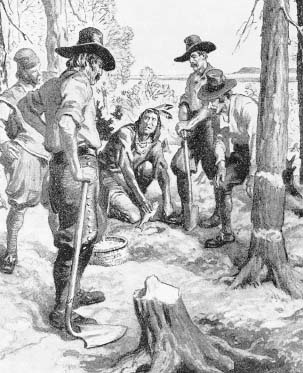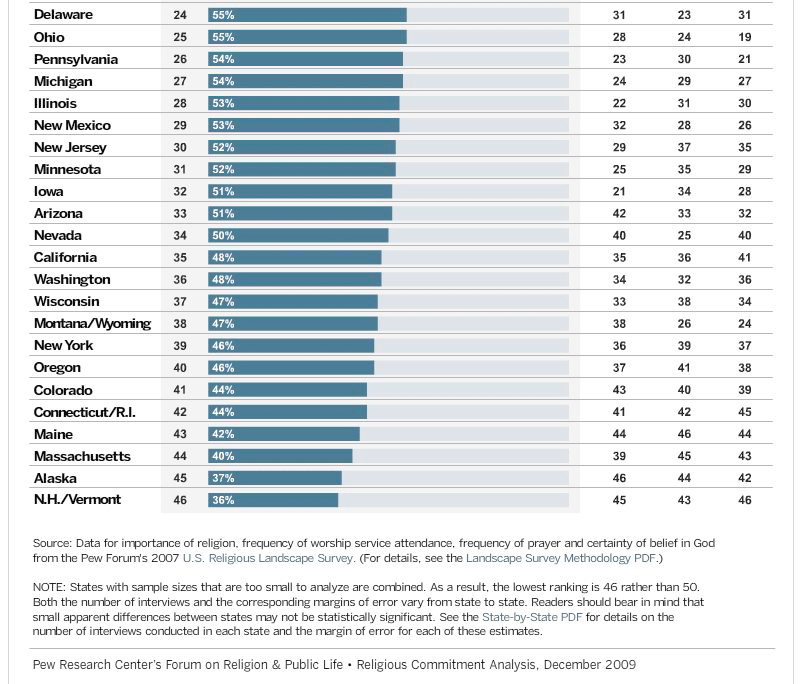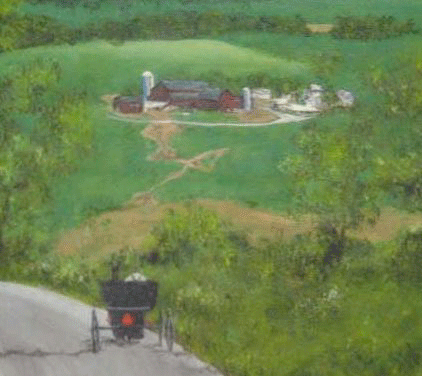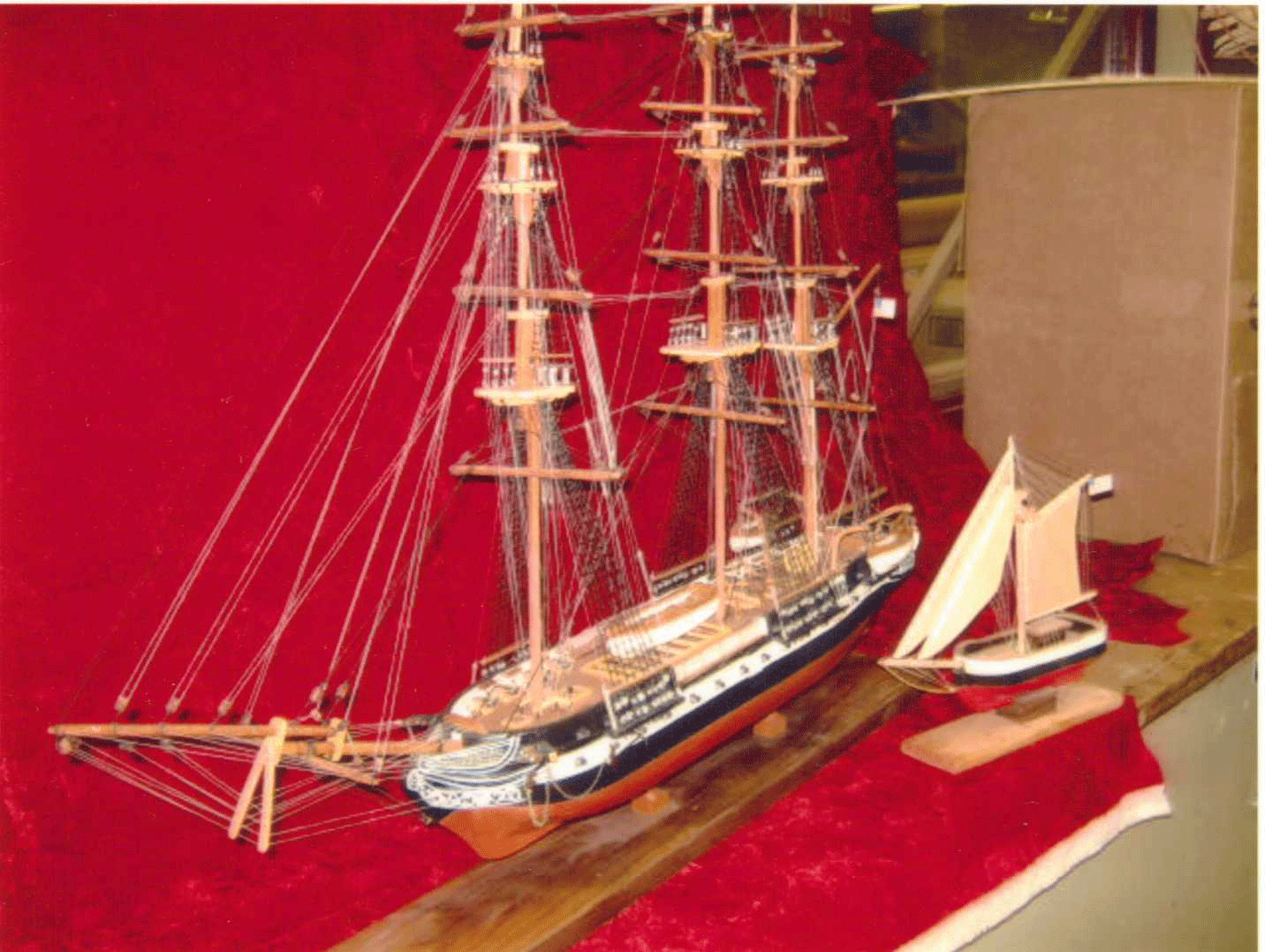In the Land of Nod, East of Eden
 At Thanksgiving last year, I wrote a post called "Before the Mayflower: Pilgrims and Priests." It was more of a history lesson than a typical blog post, but it got a lot of notice. It's said that history is written by the victors, not the vanquished, so my take on Thanksgiving was unusual. It was told from the point of view of Squanto, the man I credit with the survival of the Puritan Pilgrims who - for better or worse - were the political and cultural beginning of America.Anyway, please indulge me in another brief foray into history - this time, spiritual history. I just can't help myself. We can't understand where we are until we discover where we've been.In the Genesis account of the fall of man, Adam and Eve were expelled from Eden as both a punishment and a deterrent. They disobeyed God by eating from the Tree of Knowledge of Good and Evil. So God cast them out of Eden "lest [Adam] put out his hand and take also from the Tree of Life, and eat, and live forever."They were cast out of Eden to the east (Genesis 3:24). God then placed a Cherubim with a flaming sword to the east of Eden to bar Man's return, and to guard the way to the Tree of Life. Whether this is history, metaphor, myth, or allegory matters not. The inspired Word of God in the Genesis account tells us something essential about ourselves in relationship with God.A generation later, after the murder of his brother Abel, Cain too "went away from the presence of the-Lord, and dwelt in the land of Nod, east of Eden" (Genesis 4:16). The "land of Nod" has no other reference in Scripture. It represents no known geographical name or place. The name seems to derive from the Hebrew, "nad," which means "to wander." Cain himself described his fate in just that way: "from thy face I shall be hidden; I shall be a fugitive and a wanderer on the earth" (Genesis 4:14).
At Thanksgiving last year, I wrote a post called "Before the Mayflower: Pilgrims and Priests." It was more of a history lesson than a typical blog post, but it got a lot of notice. It's said that history is written by the victors, not the vanquished, so my take on Thanksgiving was unusual. It was told from the point of view of Squanto, the man I credit with the survival of the Puritan Pilgrims who - for better or worse - were the political and cultural beginning of America.Anyway, please indulge me in another brief foray into history - this time, spiritual history. I just can't help myself. We can't understand where we are until we discover where we've been.In the Genesis account of the fall of man, Adam and Eve were expelled from Eden as both a punishment and a deterrent. They disobeyed God by eating from the Tree of Knowledge of Good and Evil. So God cast them out of Eden "lest [Adam] put out his hand and take also from the Tree of Life, and eat, and live forever."They were cast out of Eden to the east (Genesis 3:24). God then placed a Cherubim with a flaming sword to the east of Eden to bar Man's return, and to guard the way to the Tree of Life. Whether this is history, metaphor, myth, or allegory matters not. The inspired Word of God in the Genesis account tells us something essential about ourselves in relationship with God.A generation later, after the murder of his brother Abel, Cain too "went away from the presence of the-Lord, and dwelt in the land of Nod, east of Eden" (Genesis 4:16). The "land of Nod" has no other reference in Scripture. It represents no known geographical name or place. The name seems to derive from the Hebrew, "nad," which means "to wander." Cain himself described his fate in just that way: "from thy face I shall be hidden; I shall be a fugitive and a wanderer on the earth" (Genesis 4:14). The Aggadah - a collection of Rabbinic commentary, legend, and anecdotes accumulated over a thousand years - expanded on the Biblical account. The "mark of Cain" imposed by God was a pair of horns. According to the Aggadah legend, Cain's great-grandson, Lamech, had poor eyesight and shot Cain with an arrow believing him to be a beast. There was a sense of "what goes around comes around” in the Aggadah version.In Genesis, Cain's descendant, Lamech, became sort of a counter-cultural anti-hero seen as the epitome of the moral degradation of blood revenge. Lamech killed a man for wounding him. "If Cain is avenged sevenfold, truly Lamech seventy-sevenfold" (Genesis 4:24). Cain's murder of his brother, and his banishment to the east, set in motion a ripple effect of epic proportion.I have long wondered if the banishment of Adam and Cain "east of Eden" is a divinely inspired symbol of man's fall from grace, a state of being more than a place. Jumping ahead way ahead - the Magi of Matthew's Gospel came to Christ from the east (Matthew 2:1). They "saw his star in the east" and followed it out of the east - out of what is now likely modern day Iran - until ... well you know the rest.I envision the Star of Bethlehem to be a sort of beacon leading the way out of the darkness of the east, the darkness of man's past, out of the spiritual wanderlust set into motion by Adam and Cain. In the Tanakh translation of the Jewish Scripture - our "Old" Testament - Psalm 113:3 is translated, "From the east to the west the Name of the Lord will be praised."FACING WEST AGAINSome of the prisoners I see each day are aware that I write weekly for These Stone Walls. Those who had a recipe published in "Guess What's Coming to Dinner" in October invited their families to read that post. Several others asked to read a printed copy of "Before the Mayflower," and it's been circulating here a bit. Just a few days ago, a prisoner I do not know asked me if the "Squanto story" is true.
The Aggadah - a collection of Rabbinic commentary, legend, and anecdotes accumulated over a thousand years - expanded on the Biblical account. The "mark of Cain" imposed by God was a pair of horns. According to the Aggadah legend, Cain's great-grandson, Lamech, had poor eyesight and shot Cain with an arrow believing him to be a beast. There was a sense of "what goes around comes around” in the Aggadah version.In Genesis, Cain's descendant, Lamech, became sort of a counter-cultural anti-hero seen as the epitome of the moral degradation of blood revenge. Lamech killed a man for wounding him. "If Cain is avenged sevenfold, truly Lamech seventy-sevenfold" (Genesis 4:24). Cain's murder of his brother, and his banishment to the east, set in motion a ripple effect of epic proportion.I have long wondered if the banishment of Adam and Cain "east of Eden" is a divinely inspired symbol of man's fall from grace, a state of being more than a place. Jumping ahead way ahead - the Magi of Matthew's Gospel came to Christ from the east (Matthew 2:1). They "saw his star in the east" and followed it out of the east - out of what is now likely modern day Iran - until ... well you know the rest.I envision the Star of Bethlehem to be a sort of beacon leading the way out of the darkness of the east, the darkness of man's past, out of the spiritual wanderlust set into motion by Adam and Cain. In the Tanakh translation of the Jewish Scripture - our "Old" Testament - Psalm 113:3 is translated, "From the east to the west the Name of the Lord will be praised."FACING WEST AGAINSome of the prisoners I see each day are aware that I write weekly for These Stone Walls. Those who had a recipe published in "Guess What's Coming to Dinner" in October invited their families to read that post. Several others asked to read a printed copy of "Before the Mayflower," and it's been circulating here a bit. Just a few days ago, a prisoner I do not know asked me if the "Squanto story" is true. Squanto's plight in my Thanksgiving account caused an interesting reaction, and seemed to inspire discussion about how to best cope with shattered dreams and hopes, with loss and the fall from grace, with life in the land of Nod, east of Eden. The prevailing thought has been that Squanto responded to his bitterness and loss with sacrifice. The irony of what Squanto did is not lost on prisoners.Captured by a British ship and nearly sold into slavery - his life in ruins and everyone he loved destroyed - Squanto chose to come to the aid of the only people worse off than Squanto himself: the hapless pilgrims who stepped off the Mayflower in winter, 1620.Some prisoners conclude that they need to be more like Squanto. Many of the men around me have lives that spun out of control through drug addiction, poverty, selfishness, or greed. A lot of people imagine that prisoners are just evil, brutal men incapable of considering anyone but themselves. The media's portrayal of prisoners as brutal, manipulative and self-involved accurately describes only a very small minority.Evil men do exist, and prisons everywhere contain them, but they are not typical of men in prison. Most men in prison simply got caught up in something, made mistakes - some very grave - but are no more evil than your friends and neighbors. Some would give anything to atone for their crimes, to take back the wrongs they have done. Some were victims before they were victimizers. Most are guilty of crimes, but some are not.
Squanto's plight in my Thanksgiving account caused an interesting reaction, and seemed to inspire discussion about how to best cope with shattered dreams and hopes, with loss and the fall from grace, with life in the land of Nod, east of Eden. The prevailing thought has been that Squanto responded to his bitterness and loss with sacrifice. The irony of what Squanto did is not lost on prisoners.Captured by a British ship and nearly sold into slavery - his life in ruins and everyone he loved destroyed - Squanto chose to come to the aid of the only people worse off than Squanto himself: the hapless pilgrims who stepped off the Mayflower in winter, 1620.Some prisoners conclude that they need to be more like Squanto. Many of the men around me have lives that spun out of control through drug addiction, poverty, selfishness, or greed. A lot of people imagine that prisoners are just evil, brutal men incapable of considering anyone but themselves. The media's portrayal of prisoners as brutal, manipulative and self-involved accurately describes only a very small minority.Evil men do exist, and prisons everywhere contain them, but they are not typical of men in prison. Most men in prison simply got caught up in something, made mistakes - some very grave - but are no more evil than your friends and neighbors. Some would give anything to atone for their crimes, to take back the wrongs they have done. Some were victims before they were victimizers. Most are guilty of crimes, but some are not.
Many of the younger prisoners are just lost. There's a clear correlation between their presence here and the systemic breakdown of family - especially fatherhood - in our culture. There is an alarming number of young prisoners here who have had either abusive fathers or none at all. There is a direct and demonstrable correlation between the breakdown of family and the marked increase in prisoners in our society.
NORTHEAST OF EDENLast month, the Pew Research Center published the results of a study that identified the most and least religious areas of the United States. The study based its conclusions on surveys with parameters such as professed belief in God, participation in worship, the importance of religion in daily lives, and the practice of personal prayer. Mississippi, Alabama, and Arkansas were the most religious states with mostly Southern states rounding out the top ten.In contrast, the six New England states were at the very bottom of the fifty states. It's ironic that the Puritans settled New England in 1620 desiring to build a religiously based society free from Catholic influence. The Puritans wanted religion, but not a church. They wanted religion free of Sacraments and symbols, free of any magisterial teaching authority, a religion of the elect. Nearly 500 years later, the community they established has now been identified as the least religiously influenced region of the country.In the Pew study, New Hampshire placed at the very bottom 50th out of 50 states - with a population professing any sort of religious belief, practice, or a religiously informed value system. In inverse proportion to the influence of religion on its population, New Hampshire now leads the nation in the growth of its prison population in ratio to its citizen population.
 In 1980, New Hampshire had 326 prisoners. By 2005, the prison population swelled to 2,500. It is now about 3,000. Between 1980 and 2005, the New Hampshire state population grew 34 percent while its prison population grew nearly 600 percent in the same period, and without any commensurate increase in crime rate. Anyone who is not alarmed by this statistic doesn't understand the relationship between religious values, family life, crime, and the abandonment of young people to wander east of Eden. Among young men now in the New Hampshire prison system, the recidivism rate is a staggering 57 percent.There's a compelling argument here for the preservation of family and the restoration of religion in the American public square. There are far better ways for our society to invest the billions of dollars it now sinks into new prisons. The population in the land of Nod east of Eden is growing fast.It's not all gloom and doom. In New Hampshire, at least, there is an emphasis on programs and rehabilitation that present an avenue toward redemption. In the journey out of the east, there are some prisoners who stand out, and their journey is most clearly expressed in their art.On the eastern end of the Concord prison complex is a workshop known as HobbyCraft. There, prisoner volunteers make some 1,000 toys per year for the U.S. Marine Corp's "Toys-for-Tots" program. One of the program's most prolific volunteers was Stephen Sadvari, known - for reasons unknown - as "Sudsy." He died a few days before Thanksgiving last year after twenty years in this prison. Gifted in woodworking, Sudsy took the lead in developing a prison chapter of the program that provided high quality toys and gifts for thousands of under privileged children over the years.What Sudsy became known for was not the crime he committed all those years ago, but rather for putting his heart and God-given skills at the service of others. In addition to the Toys-for-Tots program, Sudsy, a Vietnam veteran, was deeply committed to the cause of POW's-MIA's from that and other wars. Sudsy's death last year left a big void in the Toys-for-Tots program, but he also left his own example.Others have stepped in to fill that void. Among them is Mike Herrick, a 50-year old prisoner who has been in prison for over twenty years. Mike has donated his prodigious skill in woodworking to Sudsy's passion for the Toys-for-Tots program. Mike is currently starting a program to assist one of the New Hampshire Food Banks. Here are two examples of Mike's woodworking projects:
In 1980, New Hampshire had 326 prisoners. By 2005, the prison population swelled to 2,500. It is now about 3,000. Between 1980 and 2005, the New Hampshire state population grew 34 percent while its prison population grew nearly 600 percent in the same period, and without any commensurate increase in crime rate. Anyone who is not alarmed by this statistic doesn't understand the relationship between religious values, family life, crime, and the abandonment of young people to wander east of Eden. Among young men now in the New Hampshire prison system, the recidivism rate is a staggering 57 percent.There's a compelling argument here for the preservation of family and the restoration of religion in the American public square. There are far better ways for our society to invest the billions of dollars it now sinks into new prisons. The population in the land of Nod east of Eden is growing fast.It's not all gloom and doom. In New Hampshire, at least, there is an emphasis on programs and rehabilitation that present an avenue toward redemption. In the journey out of the east, there are some prisoners who stand out, and their journey is most clearly expressed in their art.On the eastern end of the Concord prison complex is a workshop known as HobbyCraft. There, prisoner volunteers make some 1,000 toys per year for the U.S. Marine Corp's "Toys-for-Tots" program. One of the program's most prolific volunteers was Stephen Sadvari, known - for reasons unknown - as "Sudsy." He died a few days before Thanksgiving last year after twenty years in this prison. Gifted in woodworking, Sudsy took the lead in developing a prison chapter of the program that provided high quality toys and gifts for thousands of under privileged children over the years.What Sudsy became known for was not the crime he committed all those years ago, but rather for putting his heart and God-given skills at the service of others. In addition to the Toys-for-Tots program, Sudsy, a Vietnam veteran, was deeply committed to the cause of POW's-MIA's from that and other wars. Sudsy's death last year left a big void in the Toys-for-Tots program, but he also left his own example.Others have stepped in to fill that void. Among them is Mike Herrick, a 50-year old prisoner who has been in prison for over twenty years. Mike has donated his prodigious skill in woodworking to Sudsy's passion for the Toys-for-Tots program. Mike is currently starting a program to assist one of the New Hampshire Food Banks. Here are two examples of Mike's woodworking projects:

 Scott Chretien came to prison two days before Christmas in 1997. His son and daughter were three and four years old then, and are now fifteen and sixteen. Scott watched them grow up from inside prison walls.
Scott Chretien came to prison two days before Christmas in 1997. His son and daughter were three and four years old then, and are now fifteen and sixteen. Scott watched them grow up from inside prison walls.
"I've always used art to connect with my children," Scott said. "I channel my emotion into my art to create works that hopefully will be lasting reminders to my family of my thoughts of them during my separation from them."
Scott has two goals that drive every waking moment of his life in prison: to be the best father he can be despite his circumstances, and to atone for his mistake by being an example to his son and daughter. Scott spends his days creating art for them and for others. Here are two stand-out examples of Scott's artwork:

 PORNCHAI MOONTRI AND THE NARROW GATEIf there has ever been anyone in your life for whom you have lost hope for redemption, then take some time to read "Pornchai's Story." Last October, writer Ryan A. MacDonald wrote an article about it entitled "Pornchai's Path to the Narrow Gate." That, and "Pornchai's Story" can be found at "Commentary" above. They are worth reading. Pornchai's path is a great tribute to the New Hampshire prison's emphasis on rehabilitation.Pornchai spends his time studying theology through a scholarship program at Catholic Distance University. His creations in the HobbyCraft center have become legendary. Pornchai has mastered the art of model shipbuilding, and creates his own designs. Pornchai meticulously hand carves hundreds of minute pieces for each of his ships and fits them together.Two of the magnificent ships he designed and built last year were donated after being featured in the annual Newport Arts Center. Pornchai's most recent creation is a replica of the U.S. Constitution. He carved and fitted each of its over 600 parts, and spent some 2,000 hours on the design, construction and rigging. Here are two photos:
PORNCHAI MOONTRI AND THE NARROW GATEIf there has ever been anyone in your life for whom you have lost hope for redemption, then take some time to read "Pornchai's Story." Last October, writer Ryan A. MacDonald wrote an article about it entitled "Pornchai's Path to the Narrow Gate." That, and "Pornchai's Story" can be found at "Commentary" above. They are worth reading. Pornchai's path is a great tribute to the New Hampshire prison's emphasis on rehabilitation.Pornchai spends his time studying theology through a scholarship program at Catholic Distance University. His creations in the HobbyCraft center have become legendary. Pornchai has mastered the art of model shipbuilding, and creates his own designs. Pornchai meticulously hand carves hundreds of minute pieces for each of his ships and fits them together.Two of the magnificent ships he designed and built last year were donated after being featured in the annual Newport Arts Center. Pornchai's most recent creation is a replica of the U.S. Constitution. He carved and fitted each of its over 600 parts, and spent some 2,000 hours on the design, construction and rigging. Here are two photos:
 The true goal of a corrections system should be restorative justice and rehabilitation. The very purpose of imprisonment is for a society to provide a means of re-pentence, of atonement - hence the term, PENITENTiary - with the oversight of the community that has been offended, "the true design of all punishments being to reform" (Article 18 of the New Hampshire Constitution).These are concepts that have diminished in Courts throughout our country, and we would do well to revisit them. As a punishment, prison is an expensive and dismal failure. As has been pointed out before in these pages, the United States currently has five percent of the world's population and twenty-five percent of the world's prisoners.The most advanced democracy on earth is capable of a better response to the failures of men. It's getting very crowded east of Eden.
The true goal of a corrections system should be restorative justice and rehabilitation. The very purpose of imprisonment is for a society to provide a means of re-pentence, of atonement - hence the term, PENITENTiary - with the oversight of the community that has been offended, "the true design of all punishments being to reform" (Article 18 of the New Hampshire Constitution).These are concepts that have diminished in Courts throughout our country, and we would do well to revisit them. As a punishment, prison is an expensive and dismal failure. As has been pointed out before in these pages, the United States currently has five percent of the world's population and twenty-five percent of the world's prisoners.The most advanced democracy on earth is capable of a better response to the failures of men. It's getting very crowded east of Eden.

